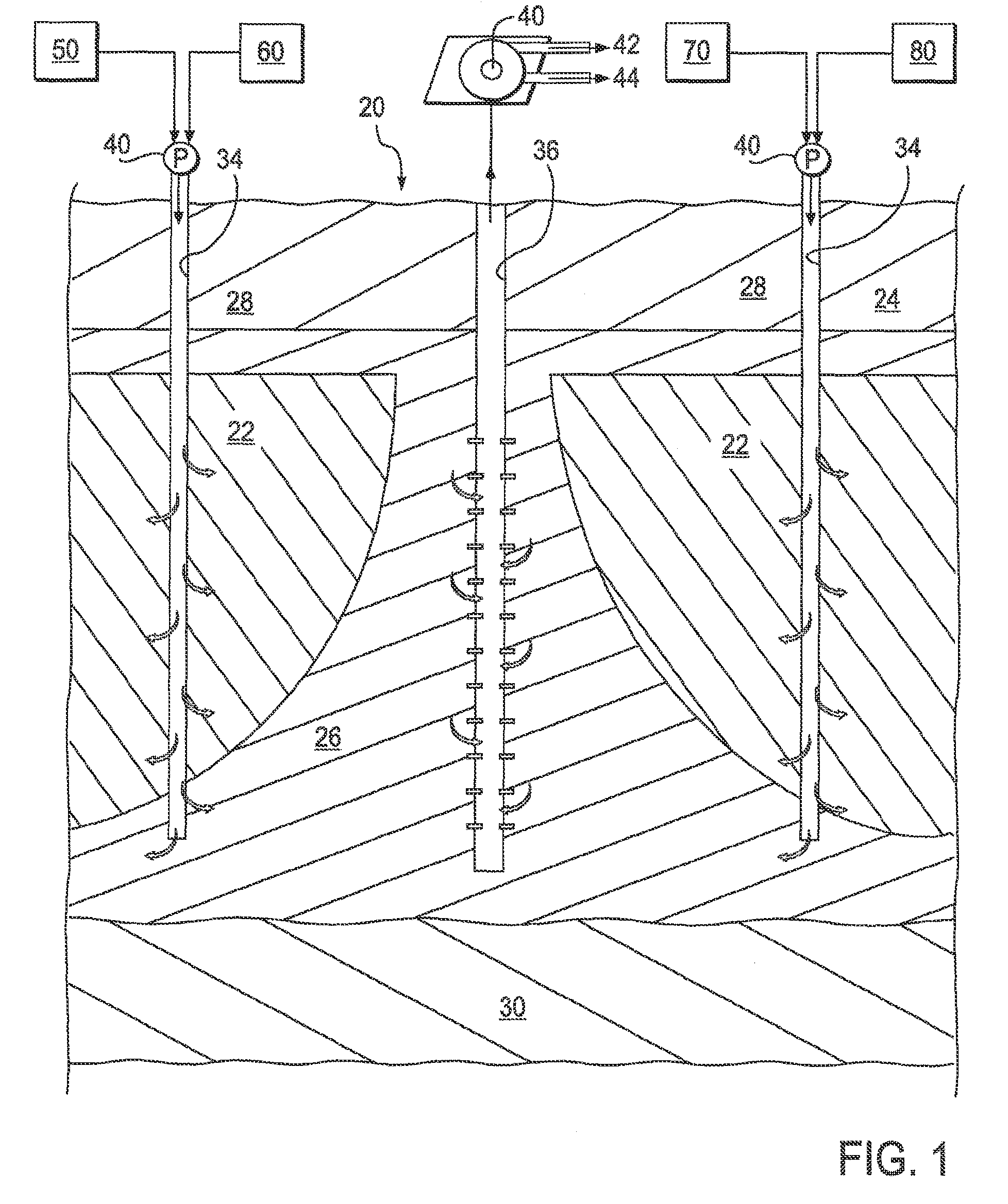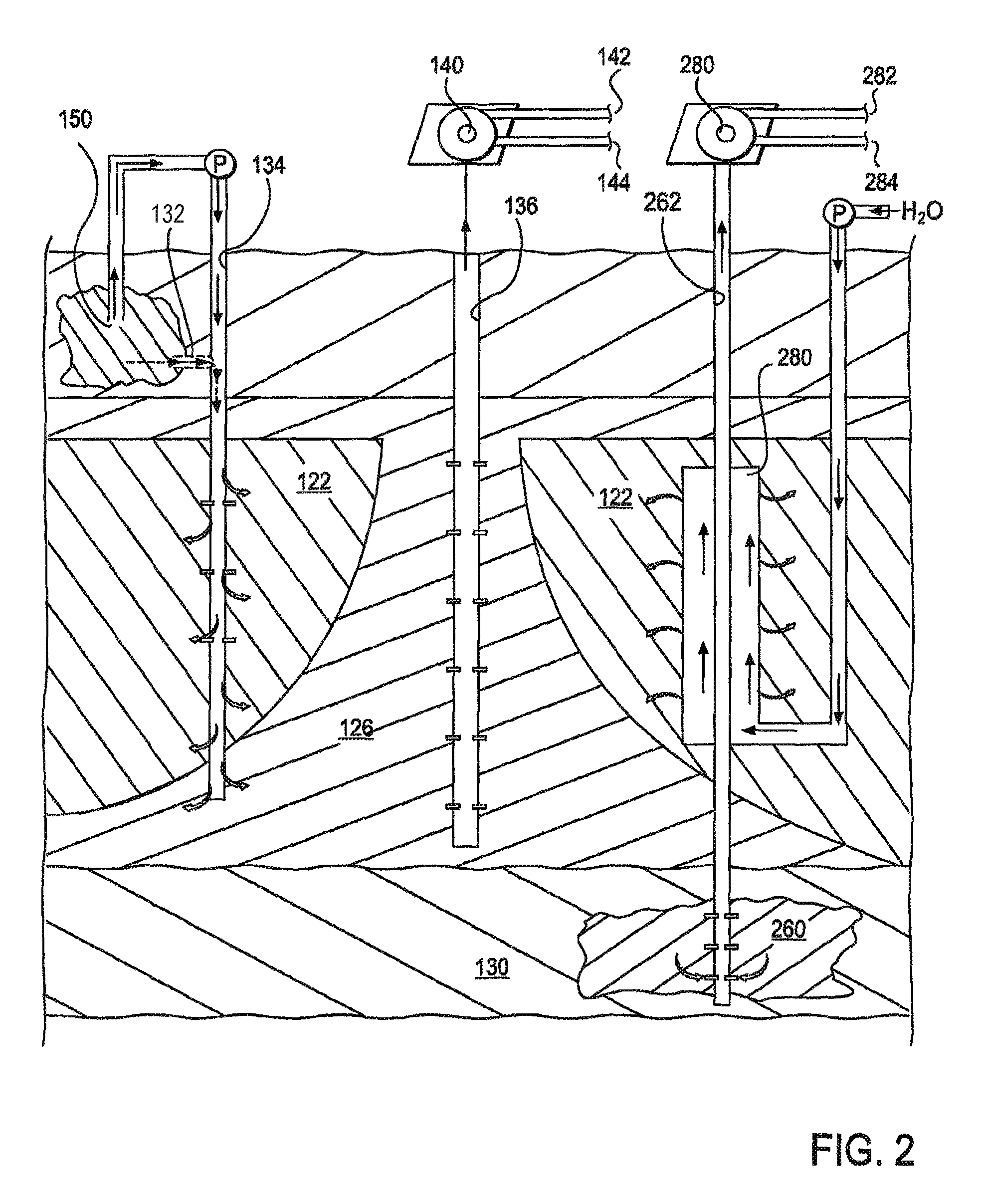Method and system for producing hydrocarbons from a hydrate reservoir using available waste heat
a technology of hydrocarbons and waste heat, which is applied in the direction of insulation, wellbore/well accessories, energy industry, etc., can solve the problems of limited heat available from surrounding geologic strata, slow heat flow rate, and significant technical and economic challenges in the production of methane hydra
- Summary
- Abstract
- Description
- Claims
- Application Information
AI Technical Summary
Benefits of technology
Problems solved by technology
Method used
Image
Examples
Embodiment Construction
[0015]Available waste heat can be advantageously used as a source for providing thermal stimulation. This waste heat could come, for example, via heat exchangers from a production facility's power generation system, compressors, or from conventional or unconventional oil and gas production. Unconventional oil and gas production refers to, for example, gas shale, tight gas, coal bed methane, oil shale and oil sands. Larger sources of waste heat could, for example, be provided by co-located power plants or chemical plants such as Gas To Liquids (GTL) or Liquefied Natural Gas (LNG) plants. Co-location with a GTL plant may be particularly beneficial because the GTL process is highly exothermic and GTL plants require large supplies of methane both for fuel an as a raw material. The GTL plant generates large amounts of waste heat, which would be directed into the hydrate reservoir, which would generate large amounts of methane gas at high rates to feed the GTL plant. Additional synergisti...
PUM
 Login to View More
Login to View More Abstract
Description
Claims
Application Information
 Login to View More
Login to View More - R&D
- Intellectual Property
- Life Sciences
- Materials
- Tech Scout
- Unparalleled Data Quality
- Higher Quality Content
- 60% Fewer Hallucinations
Browse by: Latest US Patents, China's latest patents, Technical Efficacy Thesaurus, Application Domain, Technology Topic, Popular Technical Reports.
© 2025 PatSnap. All rights reserved.Legal|Privacy policy|Modern Slavery Act Transparency Statement|Sitemap|About US| Contact US: help@patsnap.com



